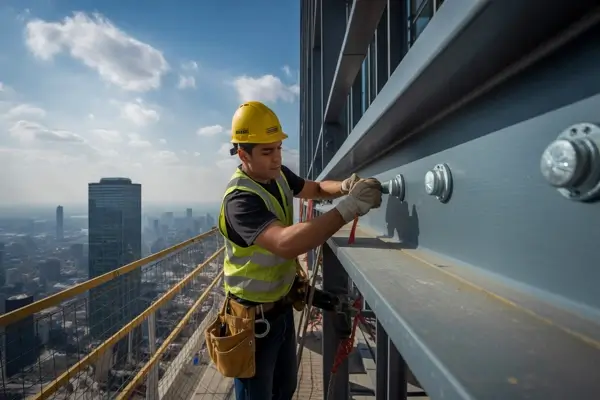Working at height Risk Assessment

A comprehensive Risk Assessment for working at heights, covering potential hazards, people at risk, what actions are already in place and further action if required.
Working at height presents a variety of significant hazards, with the most pressing being the risk of falls, which can lead to severe injuries or even fatalities. Additionally, workers face threats from falling objects, structural failures of equipment such as scaffolding or ladders, adverse weather conditions, and hazards related to slips and trips. Other contributing factors include electrical hazards, inadequate safety equipment, insufficient training, and poor risk assessment practices, all of which can escalate the likelihood of accidents.
Falls are the leading cause of serious injuries and deaths in construction and other industries involving elevation. Even falls from relatively low heights—defined as less than six feet—can result in critical injuries, such as head trauma, fractures, or spinal cord damage.
Common causes of falls include improper ladder usage (e.g., using the top rung), working on unstable or uneven surfaces, and the absence of adequate edge protection (like guardrails).
To prevent falls, organisations should implement comprehensive fall protection systems, including personal fall arrest systems, properly designed guardrails, and safe work procedures.
Tools, materials, or debris inadvertently dropped from height pose significant risks to personnel on the ground, potentially causing serious injuries or fatalities.
To mitigate falling object risks, rigorous practices must be followed, including securing all tools and materials with lanyards, using tool belts, and establishing exclusion zones beneath elevated work areas to keep non-workers safe.
Regular inspections of materials and work areas are essential to ensure no loose items are left unsecured.
The integrity of scaffolding, ladders, and other elevated platforms is paramount. Structural failures can occur due to inadequate construction, lack of maintenance, or improper worker usage.
Risks associated with these failures include overloading equipment beyond its rated capacity, improper placement on unstable ground, and utilising damaged or worn ladders and scaffolds.
To ensure safety, it is crucial to follow manufacturer guidelines for equipment use, conduct routine inspections, and provide training on the proper setup and use of scaffolding and ladders.
Adverse weather conditions, such as high winds, rain, ice, or lightning, can significantly exacerbate the risks of working at height.
In windy conditions, the risk of losing balance increases, while rain or ice can create slippery surfaces that can lead to falls.
It is vital that workers are trained to recognise hazardous weather conditions and that they have procedures in place to suspend work during severe weather. Safety gear and measures, such as slip-resistant footwear and non-slip surface treatments, should be employed whenever possible.
Wet, oily, or uneven surfaces can cause slips and trips, often leading to falls from height or other injuries.
Minimising the risks of slips and trips involves maintaining clean, dry, and hazard-free working surfaces. This can include regular cleaning schedules, prompt spill cleanup, and proper levelling techniques for uneven surfaces.
Using anti-slip mats and proper footwear with slip-resistant soles can further reduce the likelihood of slips and trips in working environments.
This document is:
- Recognised by local authorities
- Recognised by principal contractors
- Suitable for CDM sites
- Approved by H&S managers
It increases your chance of winning tenders and has been written by trained health and safety professionals.
If you want others to have confidence in your company, download and buy the proper documents today.
As with all our documents, our risk assessments are in Word™ format and available for instant download and use. You only need to buy them once.
Once you buy and download this document, it's yours for life to use repeatedly.
Download it today, put your company details on it, and use it immediately.
Give people confidence in you, your company, your products and services.
Some sample text from this document reads:
''Falling from height (ladders)'
• Serious or fatal injury could occur if a worker falls from a height.
• Non-access ladders should be used in conjunction with ladder stays, a securing device or a person footing the ladder
• Access ladders should be extended one metre above the platform
• Ladders in good condition, placed on a firm surface, and have a pre-use check before use and a thorough visual check every six months
• The ladder is used at the correct angle of 1 in 4 or 75°
• Avoid overreaching and ensure that the belt buckle remains between the ladder stiles at all times, with both feet on the same rung
• Managers to conduct toolbox talk on working at heights before work commences
Why not browse the HSEDocs catalogue of method statements, risk assessments, COSHH assessments, or industry-specific packages?
GET THIS DOCUMENT
£8.99+VAT
- Available in Word™
- Fully customisable
- Add your Company Logo
- UK & EU Compliant

 CART
CART 